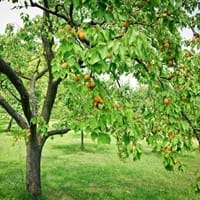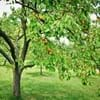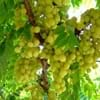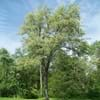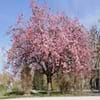Life Span
Perennial
Perennial
Types
Goldcot apricot, Harcot apricot
Not Available
Number of Varieties
Not Available
Habitat
Cold Regions, Wet lands
Scrubs, tussock grasslands, Upland savannas
USDA Hardiness Zone
4-8
10-11
Sunset Zone
Not Available
8, 9, 12, 13, 14, 15, 16, 17, 18, 19, 20, 21, 22, 23, 24
Habit
Oval or Rounded
Upright/Erect
Flower Color
White, Light Pink
Lemon yellow
Flower Color Modifier
Not Available
Bicolor
Fruit Color
Yellow, Orange, Rose
Gray Green
Leaf Color in Spring
Green
Blue Green
Leaf Color in Summer
Green
Blue Green
Leaf Color in Fall
Green
Blue Green
Leaf Color in Winter
Not Available
Blue Green
Leaf Shape
Oval
Long Narrow
Plant Season
Spring, Summer
Spring
Sunlight
Full Sun
Full Sun
Type of Soil
Loam, Sand
Loam, Sand
The pH of Soil
Acidic, Neutral, Alkaline
Acidic, Neutral, Alkaline
Soil Drainage
Well drained
Well drained
Bloom Time
Early Spring, Late Winter
Spring, Late Winter
Tolerances
Not Available
Drought
Where to Plant?
Ground
Ground
How to Plant?
Grafting, Seedlings
Seedlings
Plant Maintenance
Medium
Medium
Watering Requirements
Do not let dry out between waterings, Needs a lot of water initially
Do not water excessively
In Summer
Lots of watering
Lots of watering
In Spring
Moderate
Moderate
In Winter
Average Water
Average Water
Soil pH
Acidic, Neutral, Alkaline
Acidic, Neutral, Alkaline
Soil Type
Clay, Loam, Sand
Loam, Sand
Soil Drainage Capacity
Well drained
Well drained
Sun Exposure
Full Sun
Full Sun
Pruning
Remove damaged leaves, Remove dead branches, Remove dead leaves
Remove dead or diseased plant parts, Requires little pruning
Fertilizers
All-Purpose Liquid Fertilizer
All-Purpose Liquid Fertilizer, No fertilizers needed
Pests and Diseases
Red blotch
Insects, Root rot
Plant Tolerance
Drought
Drought
Flower Petal Number
Single
Single
Foliage Texture
Medium
Fine
Foliage Sheen
Matte
Matte
Attracts
Not Available
Butterflies
Allergy
Headache, Throat itching, Vomiting
Asthma, Eye irritation, Headache, Nose Irritation, Throat itching, Vomiting
Aesthetic Uses
Beautification, Cottage Garden
Showy Purposes
Beauty Benefits
Glowing Skin, Making cosmetics, Nourishes scalp, Skin cleanser
Not Available
Environmental Uses
Food for animals, Nesting sites for birds, Shadow Tree
Air purification, soil stabilisation
Medicinal Uses
Aging, Digestive disorders, Diuretic, Emmoiliant, Ophthalmic
Not Available
Part of Plant Used
Fruits, Leaves
Flowers, Sap, Seeds
Other Uses
Air freshner, Animal Feed, Making Perfumes, Medicinal oil
Used as a dye, Wood is used fore making tools
Used As Indoor Plant
No
No
Used As Outdoor Plant
Yes
Yes
Garden Design
Edible, Fruit / Fruit Tree
Shade Trees, Street Trees
Botanical Name
PRUNUS armeniaca
ACACIA aneura
Common Name
Apricot
Mulga, True Mulga
In German
Aprikose or Aprikosenbaum
Mulga
In French
Abricot or Abricotier
Mulga
In Spanish
Albaricoque
Mulga
In Portuguese
Apricot
Mulga
Phylum
Magnoliophyta
Magnoliophyta
Class
Magnoliopsida
Magnoliopsida
Clade
Angiosperms, Rosids
Angiosperms, Eudicots, Rosids
Tribe
Not Available
Not Available
Subfamily
Not Available
Not Available
Number of Species
Not Available
Importance of Apricot and Mulga Tree
Want to have the most appropriate plant for your garden? You might want to know the importance of Apricot and Mulga Tree. Basically, these two plants vary in many aspects. Compare Apricot and Mulga Tree as they differ in many characteristics such as their life, care, benefits, facts, etc. Every gardener must at least have the slightest clue about the plants he wants to plant in his garden. Compare their benefits, which differ in many ways like facts and uses. The medicinal use of Apricot is Aging, Digestive disorders, Diuretic, Emmoiliant and Ophthalmic whereas of Mulga Tree is Not Available. Apricot has beauty benefits as follows: Glowing Skin, Making cosmetics, Nourishes scalp and Skin cleanser while Mulga Tree has beauty benefits as follows: Glowing Skin, Making cosmetics, Nourishes scalp and Skin cleanser.
Compare Facts of Apricot vs Mulga Tree
How to choose the best garden plant for your garden depending upon its facts? Here garden plant comparison will help you to solve this query. Compare the facts of Apricot vs Mulga Tree and know which one to choose. As garden plants have benefits and other uses, allergy is also a major drawback of plants for some people. Allergic reactions of Apricot are Headache, Throat itching and Vomiting whereas of Mulga Tree have Asthma, Eye irritation, Headache, Nose Irritation, Throat itching and Vomiting respectively. Having a fruit bearing plant in your garden can be a plus point of your garden. Apricot has showy fruits and Mulga Tree has no showy fruits. Also Apricot is not flowering and Mulga Tree is not flowering . You can compare Apricot and Mulga Tree facts and facts of other plants too.
